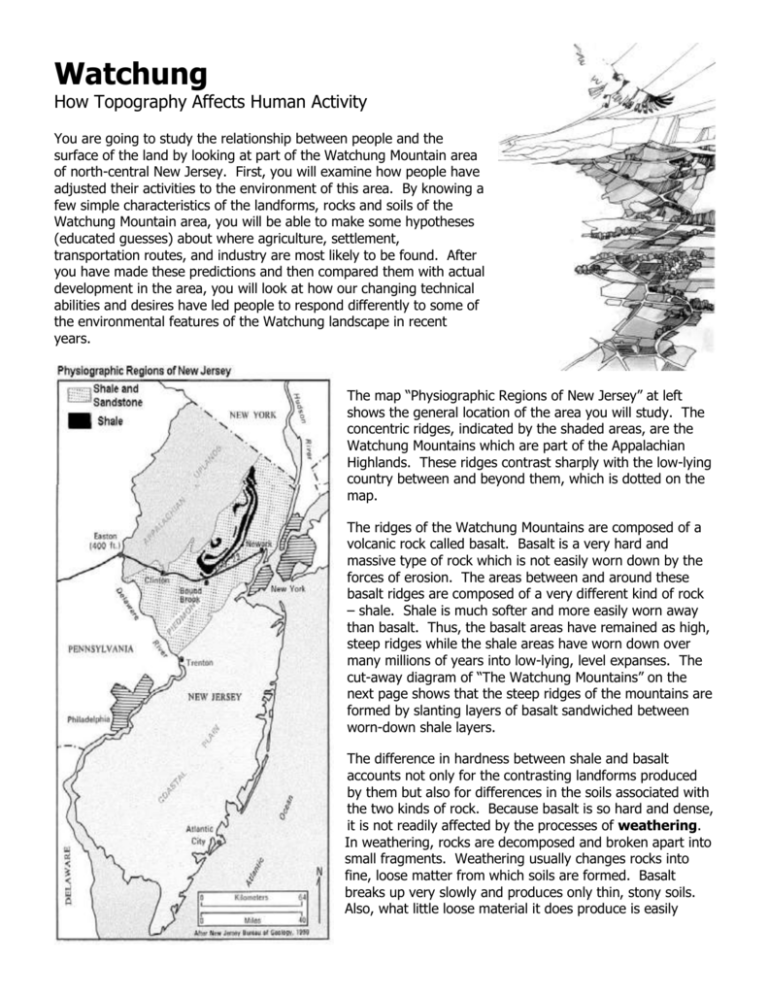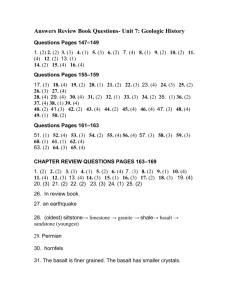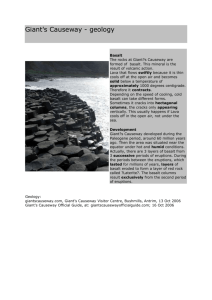Watchung Reading
advertisement

Watchung How Topography Affects Human Activity You are going to study the relationship between people and the surface of the land by looking at part of the Watchung Mountain area of north-central New Jersey. First, you will examine how people have adjusted their activities to the environment of this area. By knowing a few simple characteristics of the landforms, rocks and soils of the Watchung Mountain area, you will be able to make some hypotheses (educated guesses) about where agriculture, settlement, transportation routes, and industry are most likely to be found. After you have made these predictions and then compared them with actual development in the area, you will look at how our changing technical abilities and desires have led people to respond differently to some of the environmental features of the Watchung landscape in recent years. The map “Physiographic Regions of New Jersey” at left shows the general location of the area you will study. The concentric ridges, indicated by the shaded areas, are the Watchung Mountains which are part of the Appalachian Highlands. These ridges contrast sharply with the low-lying country between and beyond them, which is dotted on the map. The ridges of the Watchung Mountains are composed of a volcanic rock called basalt. Basalt is a very hard and massive type of rock which is not easily worn down by the forces of erosion. The areas between and around these basalt ridges are composed of a very different kind of rock – shale. Shale is much softer and more easily worn away than basalt. Thus, the basalt areas have remained as high, steep ridges while the shale areas have worn down over many millions of years into low-lying, level expanses. The cut-away diagram of “The Watchung Mountains” on the next page shows that the steep ridges of the mountains are formed by slanting layers of basalt sandwiched between worn-down shale layers. The difference in hardness between shale and basalt accounts not only for the contrasting landforms produced by them but also for differences in the soils associated with the two kinds of rock. Because basalt is so hard and dense, it is not readily affected by the processes of weathering. In weathering, rocks are decomposed and broken apart into small fragments. Weathering usually changes rocks into fine, loose matter from which soils are formed. Basalt breaks up very slowly and produces only thin, stony soils. Also, what little loose material it does produce is easily eroded – that is, carried away by water flowing down the slope, or by sliding off the steep slopes. By contrast, the softer shale provides an excellent base for soil formation. Weathering of shale produces large amounts of fine particles. These are not subject to such rapid erosion as in basalt areas, since shale areas tend to be fairly level. So the soils which have formed over the shale areas are deeper and less stony than the soils in the basalt areas. When farmed they are more productive than the soils in the basalt areas. How do these closely intertwined physical characteristics and processes affect the choice of locations for certain human activities? In this activity you will be making location predictions for different types of activities. To prepare for this, think about the following questions: 1) 2) 3) 4) 5) 6) Does steepness of slope affect the choice of location for farming? Which type of area, basalt or shale, would have the best soils for farming? In which type of area would it be easiest to use farming machinery? In which type of area would it be easiest to build houses and farm buildings? In which type of area would it be easiest to obtain water? Why? Part of the Watchung area is covered with forests. Would you expect the forests to be mainly on the basalt areas or mainly on the shale areas? 7) Do steep slopes affect the location of roads? How? 8) What factors are important in deciding the particular routes of main highways? 9) Which type of area, basalt or shale, would be best for the construction of industrial plants? 10) Which type of area would be best for urban development?






